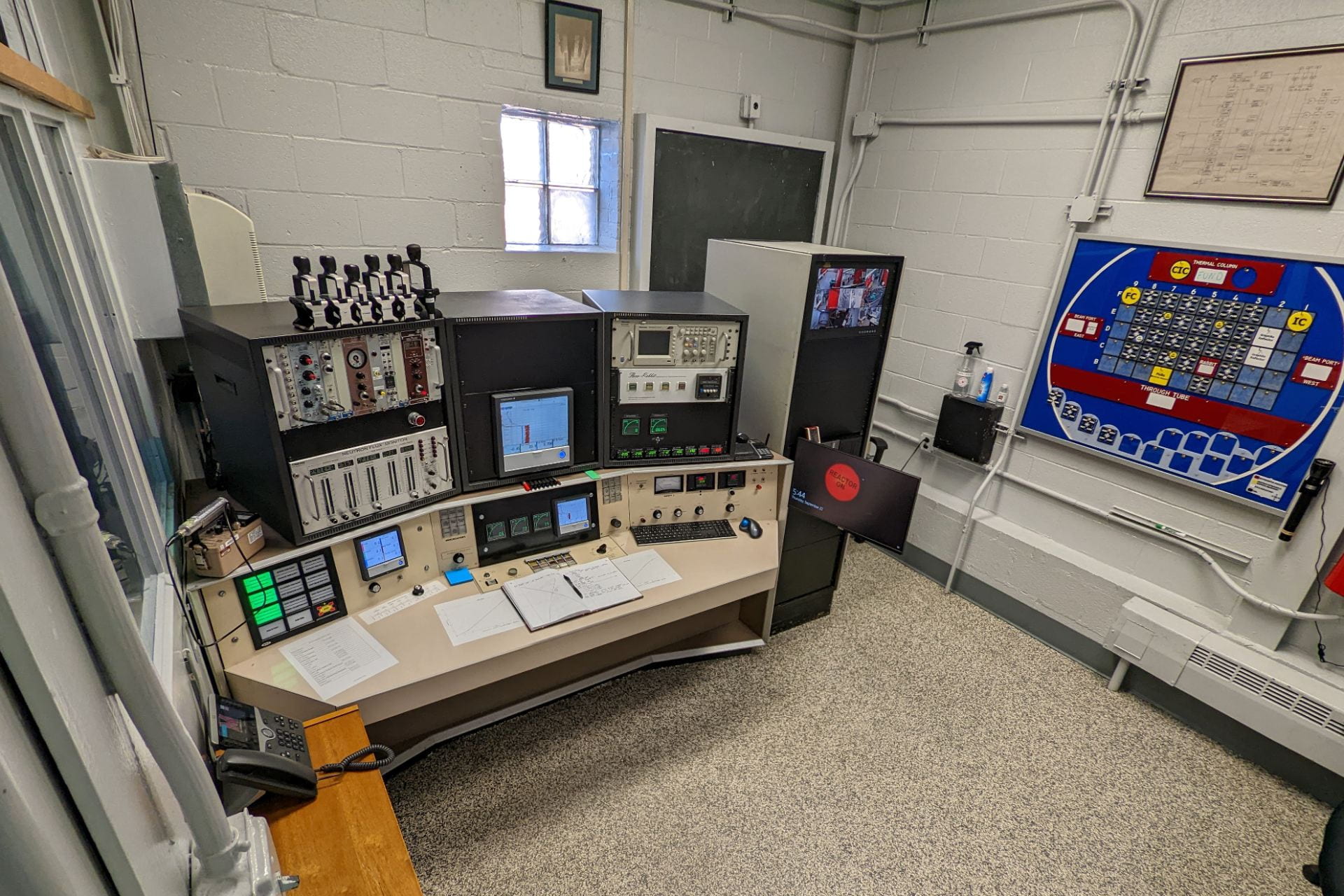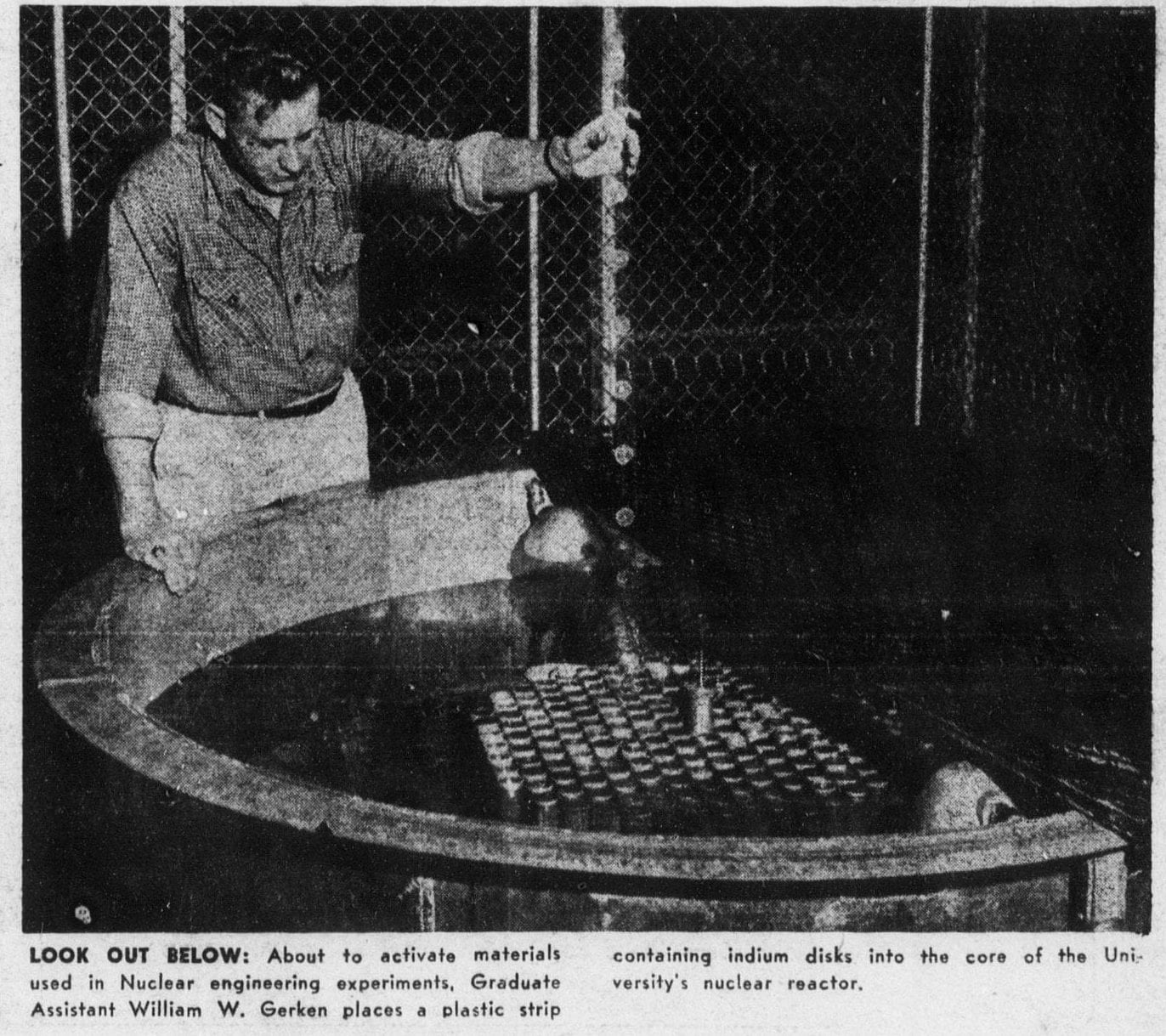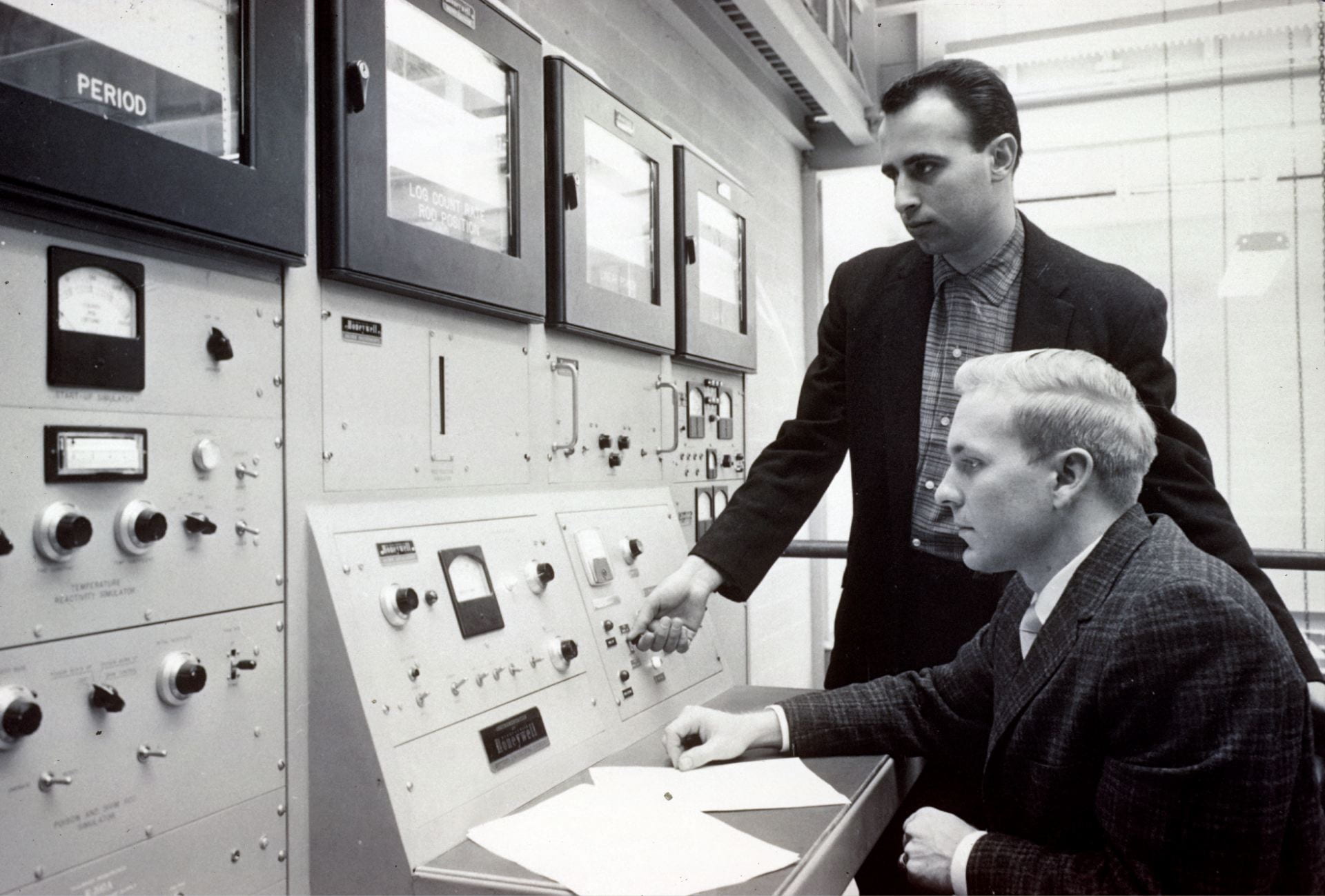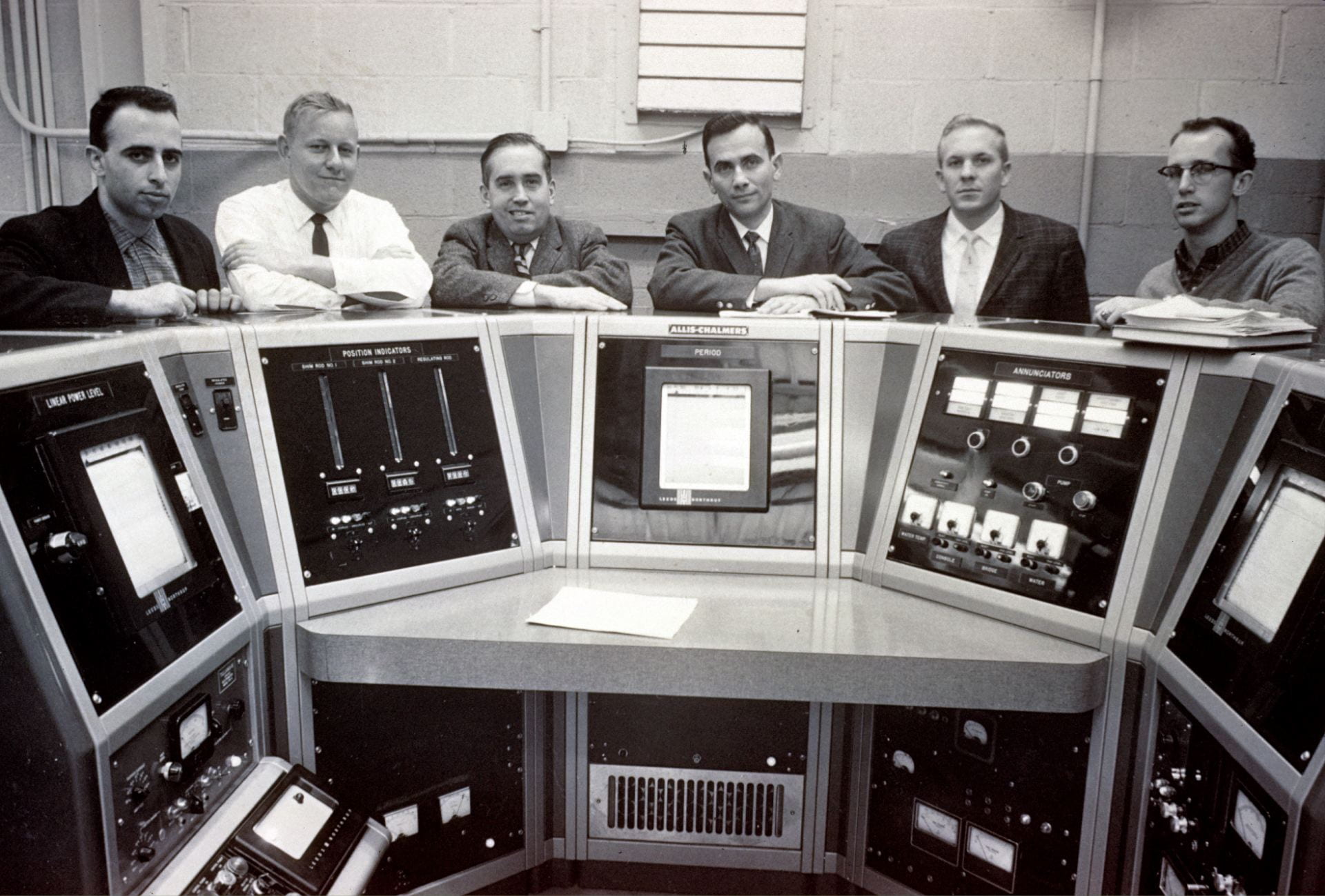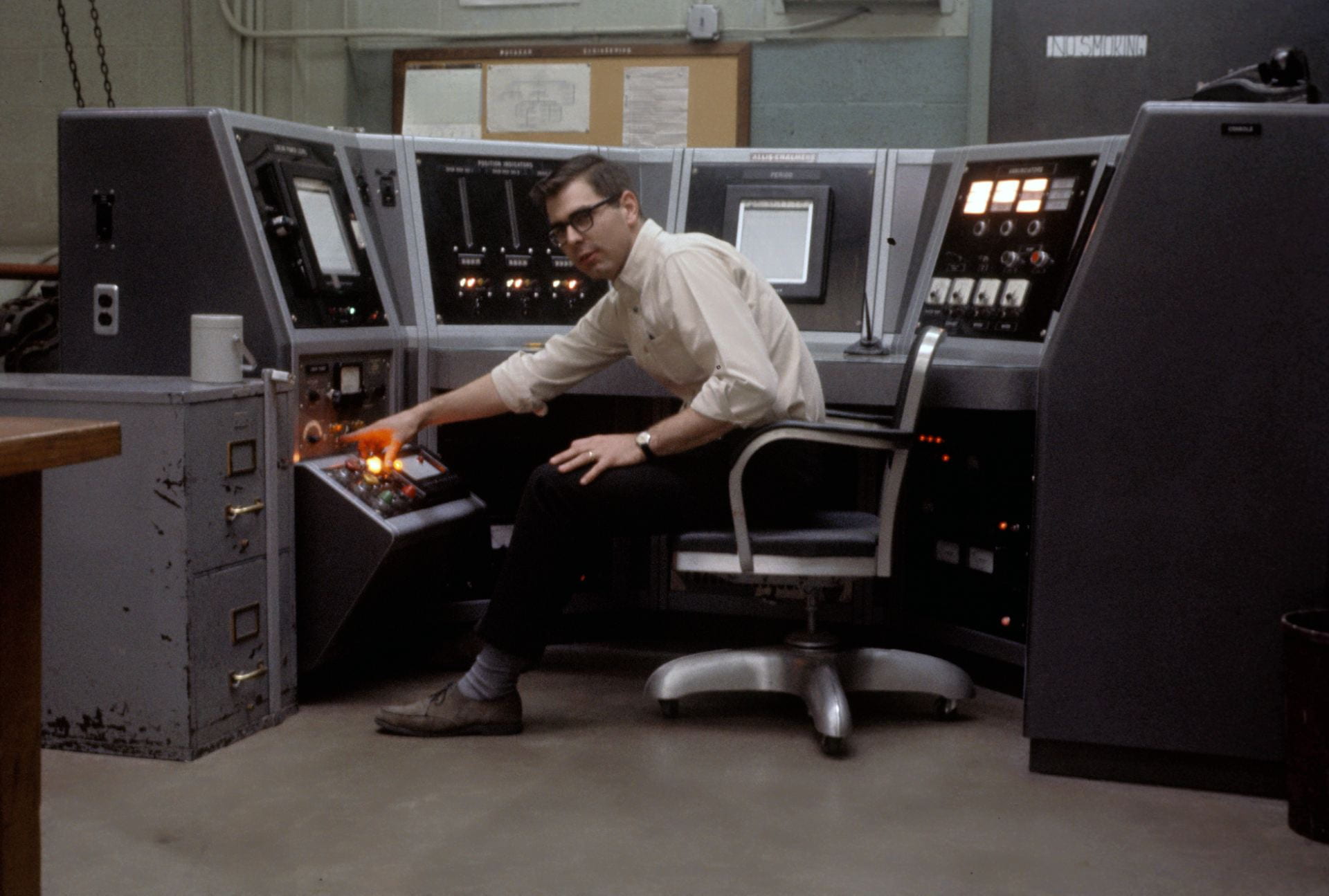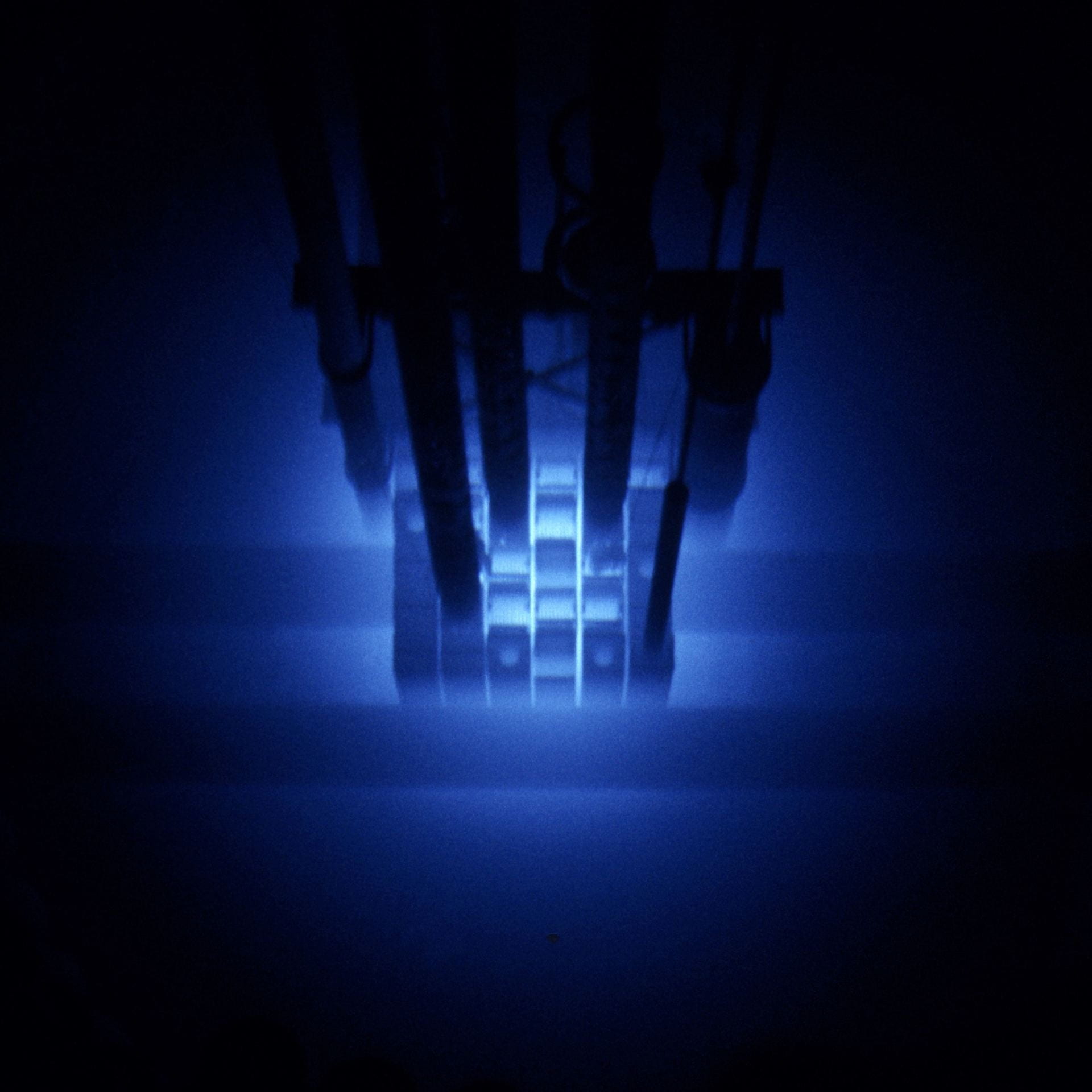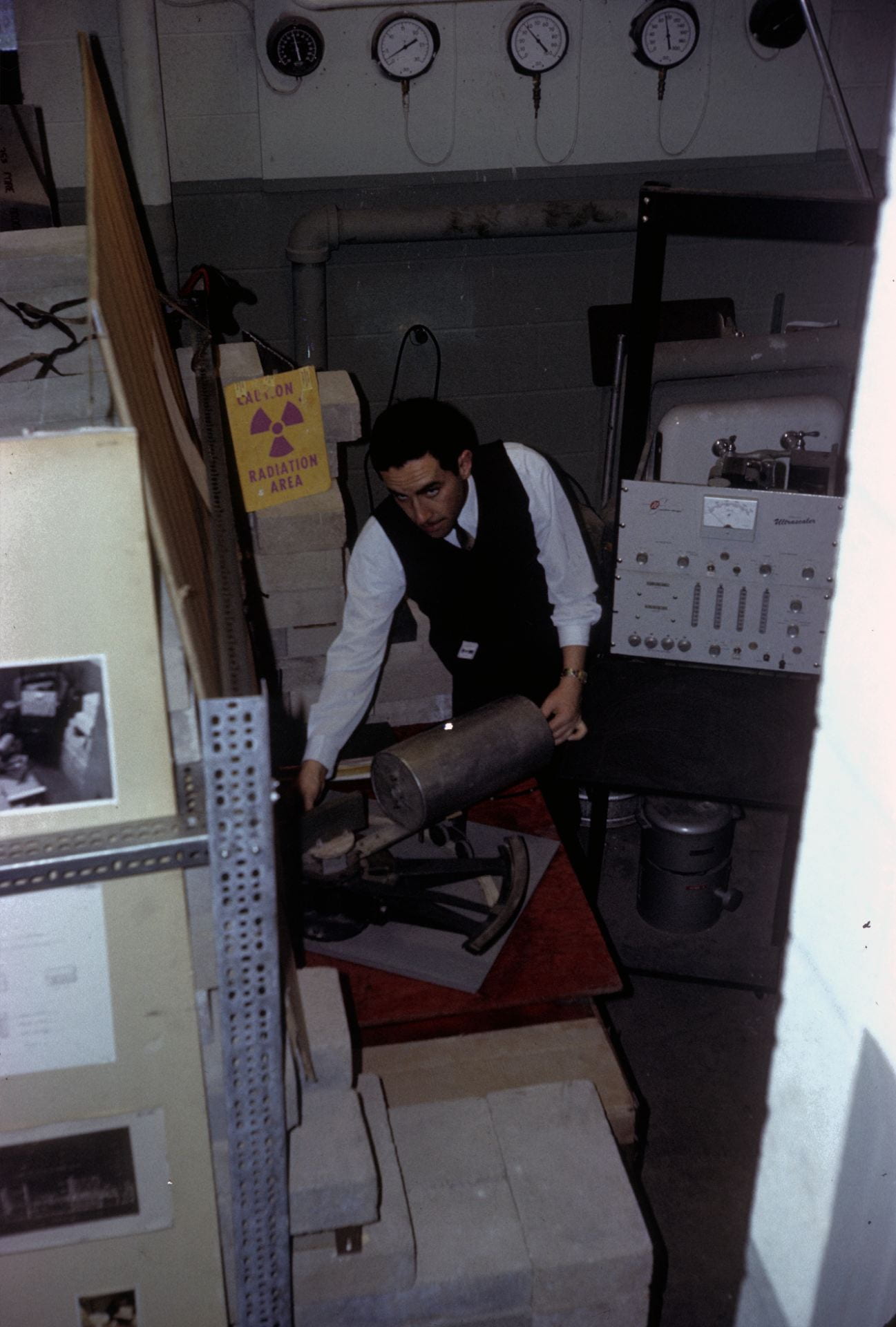The history of the Radiation Facilities began in 1954 when nuclear engineering classes were first taught at the University of Maryland. Soon thereafter, Prof. Dick Duffey, a former Manhattan Project Scientist, and Board of Regents member Clarence Tuttle began spearheading the effort to build a nuclear reactor on campus. A subcritical reactor was built in the Chemical Engineering Building (now Chemical and Nuclear Engineering Building) and was completed in June 1957. (The first university research reactor at Penn State began operating in August 1955)
In January 1959 the Atomic Energy Commission (AEC) awarded a $147,335 grant to build a 10 kW MTR-type reactor on campus. The contract to build the reactor was awarded to Allis-Chalmers Manufacturing Corporation. This reactor would be known as the University of Maryland Reactor (UMR). Construction of the Reactor Building which would be adjacent to the Chemical Engineering Building began in October of that year. In addition to the reactor it would house a Honeywell reactor simulator purchased with a seperate grant from the AEC.
After the completion of the building, the AEC issued a construction permit (CPRR-53) to begin constructing the reactor on June 29th, 1960, Just 107 days later, on October 14th, operating license R-070 was issued for the reactor. Initial criticality of the first nuclear reactor in the state of Maryland was achieved on October 18th and full power (10 kW) was first reached on December 20th, 1960. In the coming years, there would grow to be 5 research reactors in the state, 3 of which are still operating today. This places Maryland behind just California and Idaho for the most currently operational research reactors.
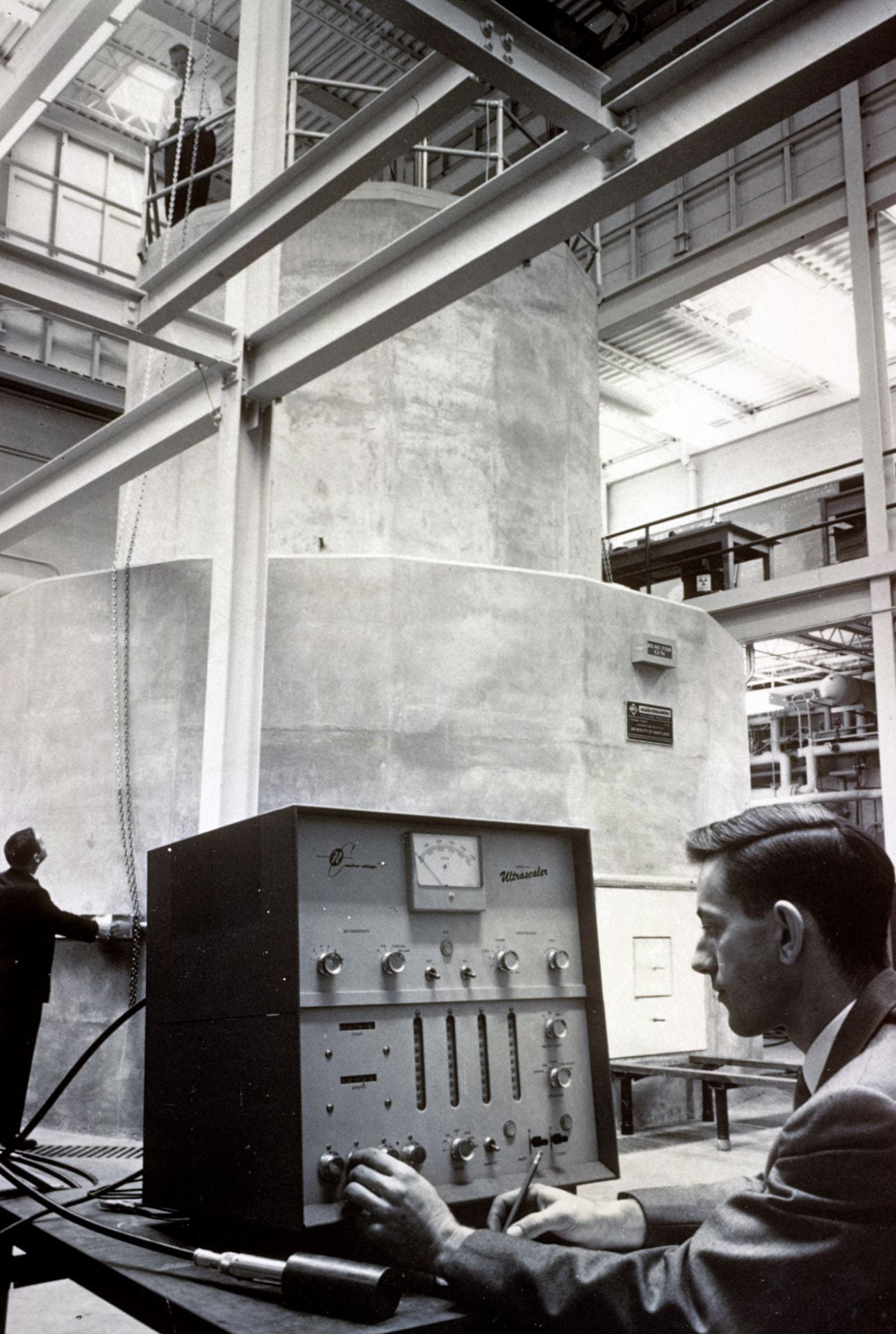
The UMR shortly after completion. Note that the reactor does not yet have its middle tier and appears to have 16 faces.
Another AEC grant was used to build the first Co-60 Irradiator on campus: a 3 kCi source housed in a new building adjacent to the reactor building. Today this building is the site of the Radiation Facilities’ dosimetry and spectroscopy labs.
The UMR was used for Nuclear Spectroscopy, Neutron Diffraction, Neutron Activation Analysis, Isotope Production, and Radiation Effects Testing. By 1966, it had contributed to 14 PhD or MS theses but the need for a more powerful reactor was recognized. Plans began to upgrade the reactor following the lead of Penn State, who in 1965, converted their High Enriched Uranium (HEU) MTR reactor to a Low Enriched Uranium (LEU) TRIGA Core.
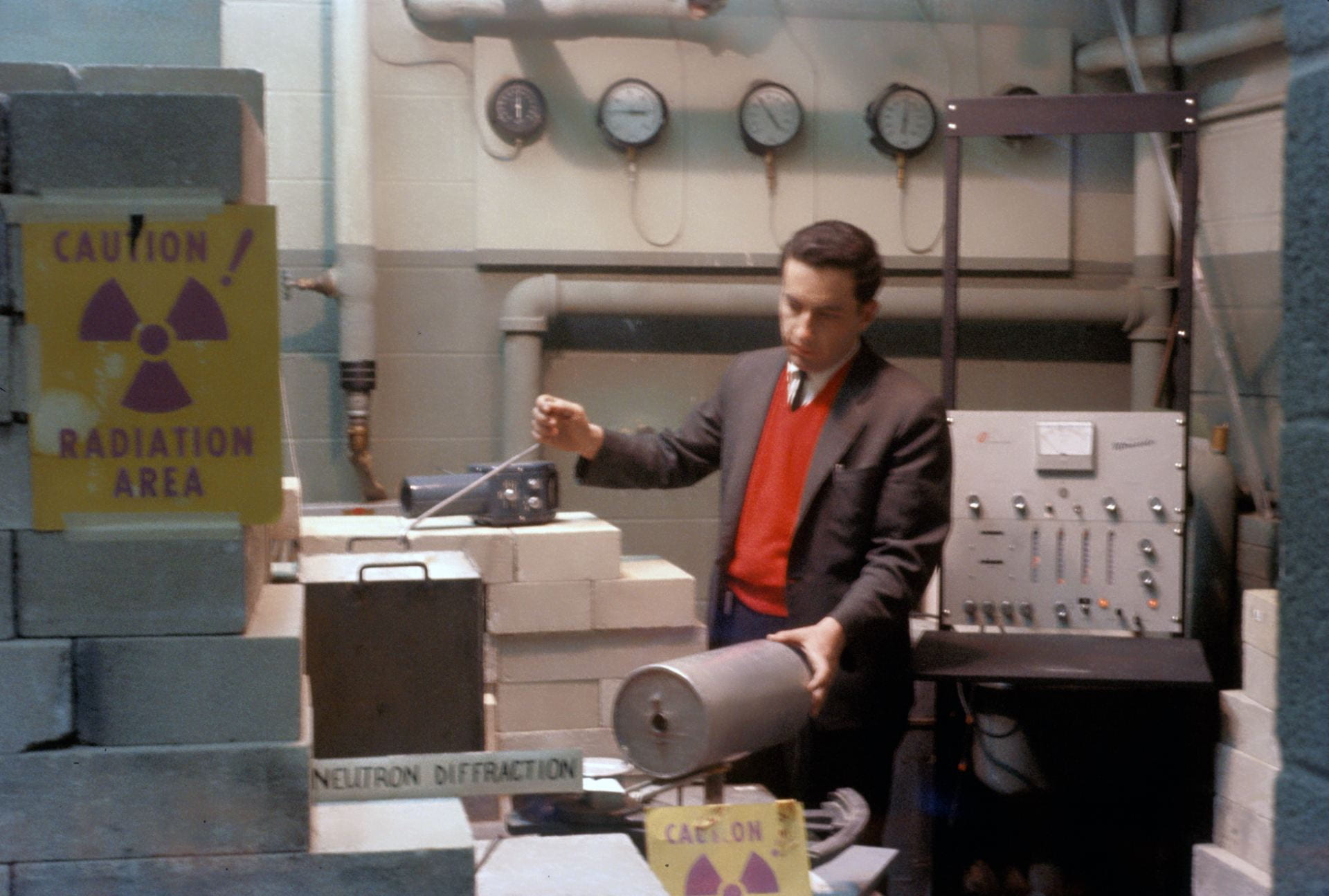 In June 1969, University of Maryland submitted a request to the AEC to construct new laboratory space in the reactor building, add a pneumatic transfer system for in-core irradiations, and convert the reactor to TRIGA fuel and a TRIGA control system. The new control system was installed in March, 1971. The MTR fuel was removed from the reactor in 1973 and TRIGA fuel clusters were installed in 1974. The TRIGA reactor, known as the Maryland University Training Reactor (MUTR) achieved its initial criticality on June 18th, 1974 and soon thereafter began operating at 250 kW.
In June 1969, University of Maryland submitted a request to the AEC to construct new laboratory space in the reactor building, add a pneumatic transfer system for in-core irradiations, and convert the reactor to TRIGA fuel and a TRIGA control system. The new control system was installed in March, 1971. The MTR fuel was removed from the reactor in 1973 and TRIGA fuel clusters were installed in 1974. The TRIGA reactor, known as the Maryland University Training Reactor (MUTR) achieved its initial criticality on June 18th, 1974 and soon thereafter began operating at 250 kW.
Sometime in the 1970s, the Chemical Engineering Building was expanded and connected to the Reactor Building and the Co-60 laboratory. Within this building now known as the Chemical and Nuclear Engineering building, a new, larger Co-60 irradiator was built and a powerful electron linac was installed. Today, these facilities form the core of the Radiation Facilities.
Now under the auspices of the newly formed Nuclear Regulatory Commission (NRC), the reactor applied for the first renewal of its 20 year operating license in 1980. The renewal was granted in 1984. In 1989, the Chemical and Nuclear Engineering Department merged with the Materials Engineering Department to form the Department of Materials and Nuclear Engineering. A second license renewal for the reactor was requested in 2000. In 2002, the Department of Materials and Nuclear Engineering was reorganized with the Nuclear Engineering program being transferred to the Mechanical Engineering Department. However, the Reactor and Radiation Facilities remained in the Materials Science and Engineering department.
The university invested a substantial amount in renovations to the Radiation Facilities from approximately 2013 to 2015. In 2015 the reactor acquired a neutron imaging system and for the first time in almost 20 years, undergraduate students were licensed as reactor operators. A formal training program to train undergraduate students as reactor operators was begun in 2016. Late that year, the reactor’s license renewal request was granted, and in early 2017, the reactor was the recipient of the first ever shipment of lightly used fuel to be returned to a reactor for reuse.
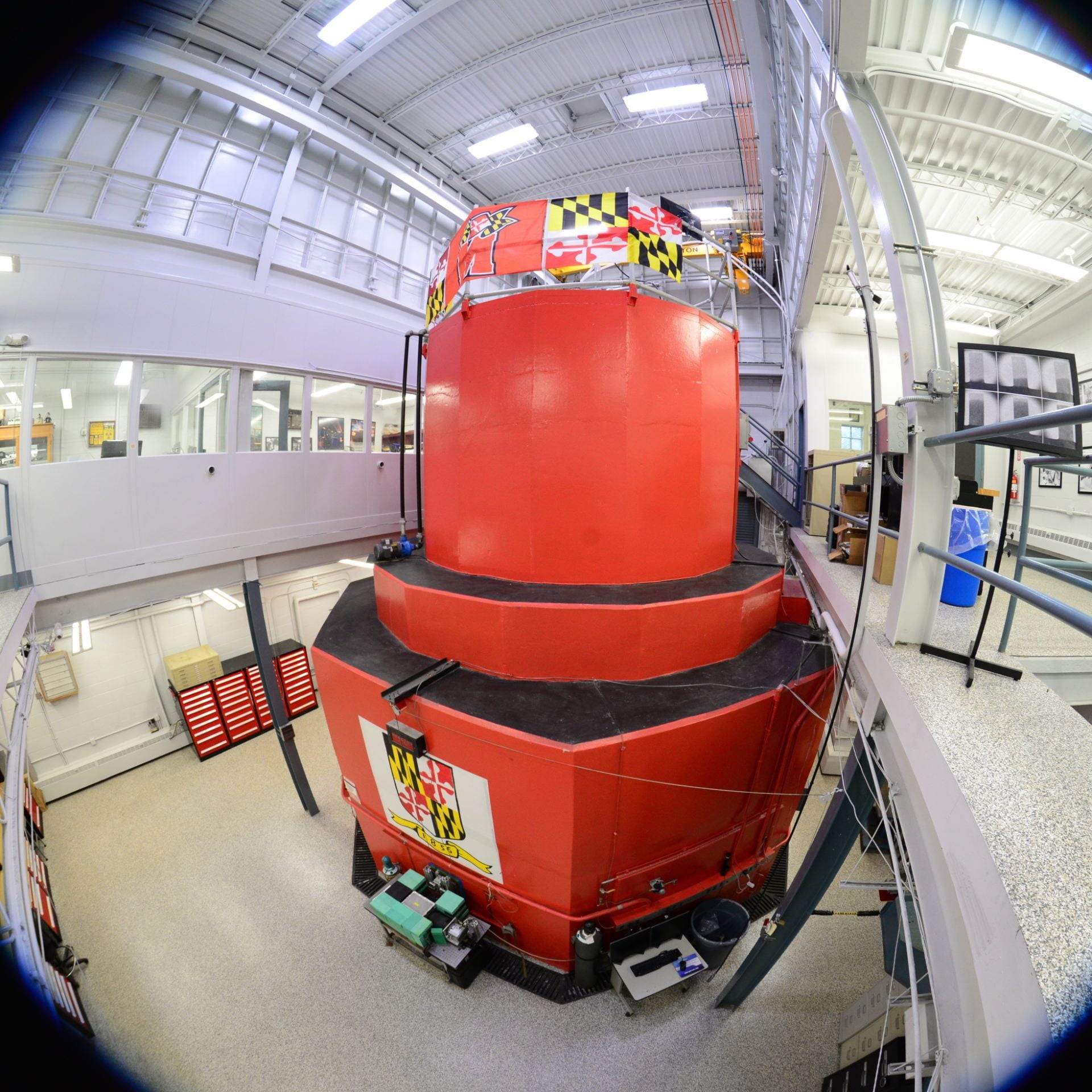
The MUTR following renovations. Note that the reactor now has a middle tier and the side that can be seen would form an octagon. This additional shielding was likely added during the TRIGA conversion.
From 2020-2022 significant control systems upgrades were completed greatly improving the reliability and usability of the reactor. The MUTR also was used to support several experiments for the National Institute of Standards and Technology (NIST) during the extended shutdown of the NIST Center for Neutron Research during 2021-2022.
